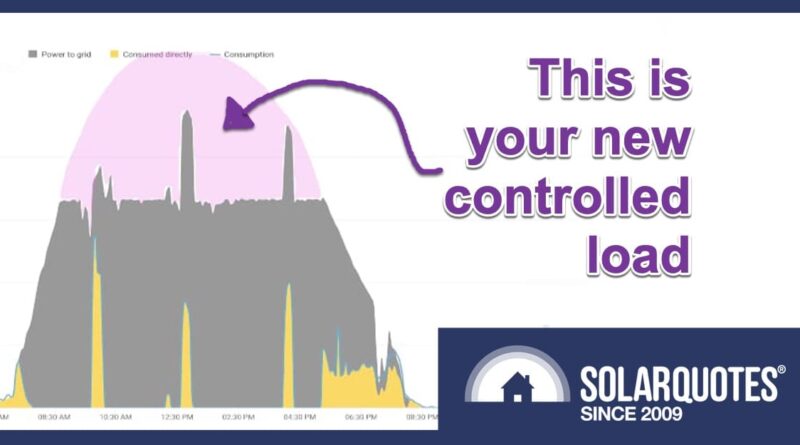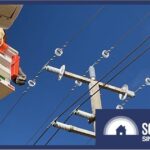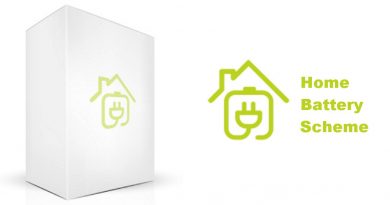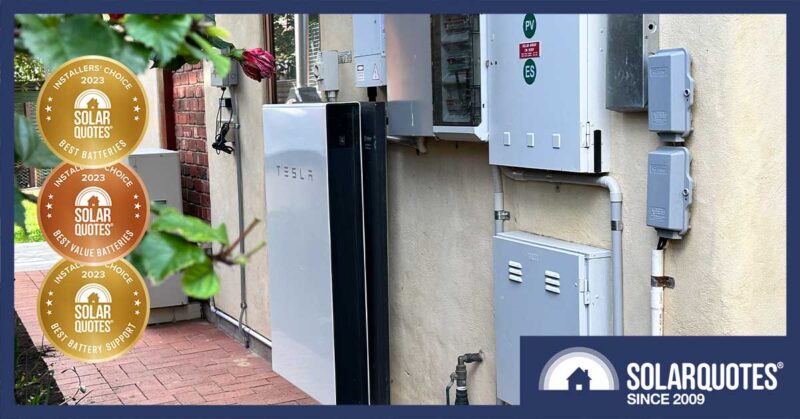Midday is the New Off-Peak: How To Harness It With Smart Diversion
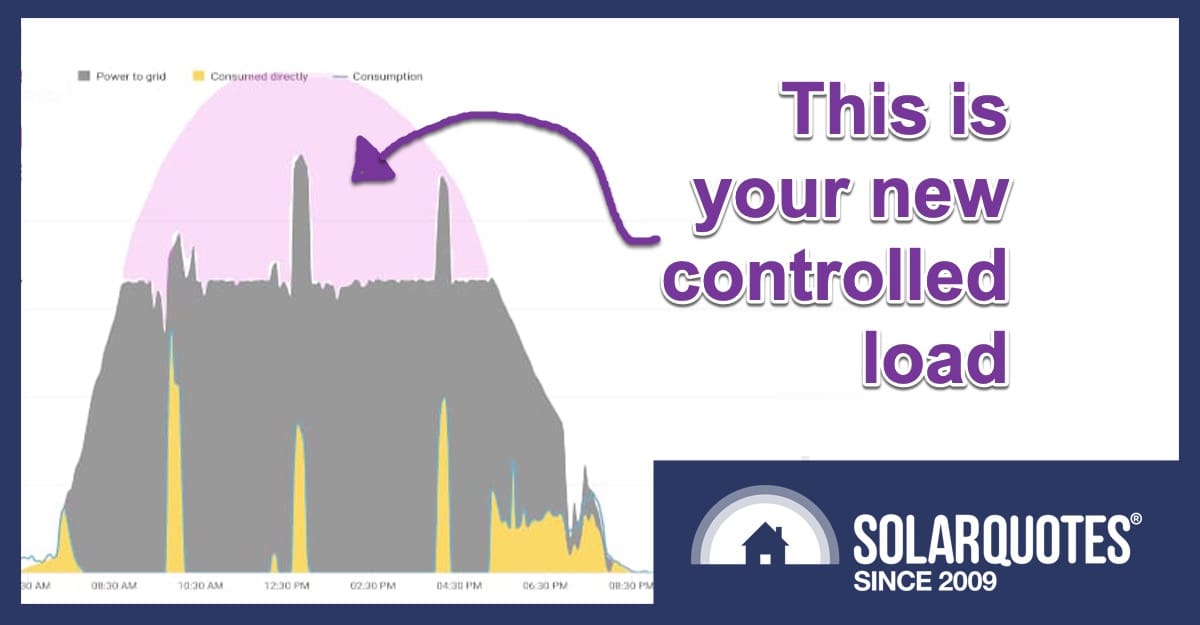

Off-peak, ‘controlled load’ has traditionally been cheap electricity overnight, but these days, “over lunch” is the cheapest electricity ever. If you’ve got a hot water service, floor heating or a similar load, you can take advantage of this ridiculously cheap energy. Read on, and I’ll explain how.
Diversion Is How You Reduce Bills
With solar power system sizes growing and export limits applied, solar energy is often curtailed for many hours on many days. Harvesting this wasted potential is truly picking up energy for free. The capital expenditure is bolted to your roof, so if you can’t export it to the grid, you may as well be using it yourself.
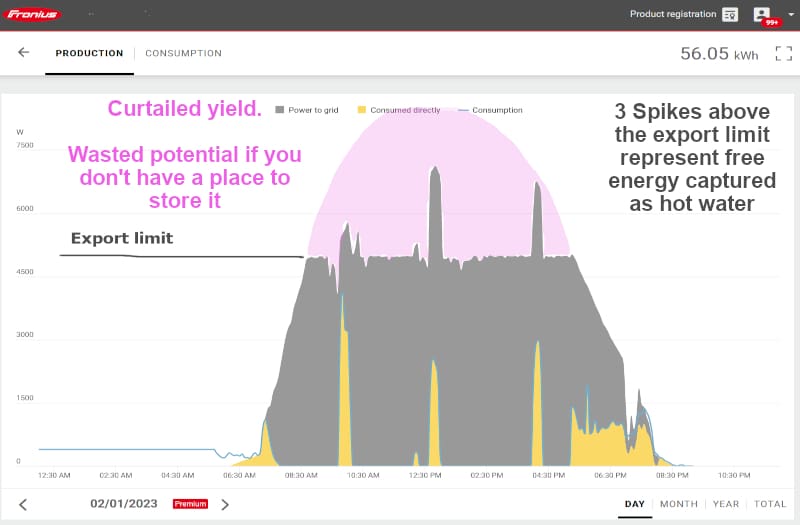
The purple curve represents a perfect solar day
Variable, Flexible, Dynamic
If you have a resistive device, like a traditional hot water service or underfloor heating, then it’s feasible to run variable amounts of electricity into the load. Like your home stereo, if you turn the knob up, it just gets louder.
As the clouds come and go, a dynamic diverter ramps up and down, perfect for capturing every last watt of passing sunshine.
The Green CATCH device has two input terminals, so you can feed your hot water service with homegrown electricity or automatically revert to off-peak whenever it is available from the network.
Except for Queensland, I think they’ve had too much sun, and it’s melted their crayons.
Bang On, Bang Off
If you starve your turntable of voltage, it won’t play records properly, so a dynamic diverter could damage many appliances if it doesn’t supply 100% of the power required. Pool pumps, heat pumps and air conditioners need a relay or contactor to be switched on when it’s sunny (100% power) and off when it isn’t, hopefully not too many times a day.
If you have this arrangement wired up with a changeover contactor, it too will switch on sunshine when it’s available or revert to controlled load when it’s not.
It also pays to put a 2.4 or 1.8kW element in the hot water service, as there’s a much greater chance you’ll be generating or exporting enough power to switch it on and not have to balance the load with imports.
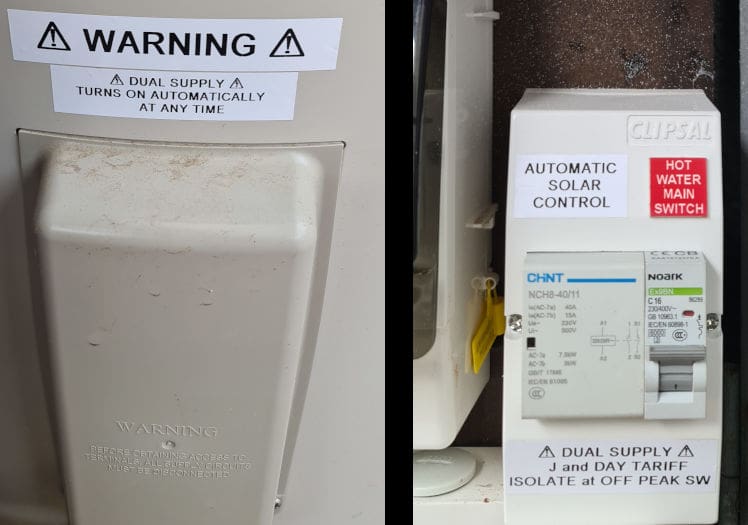
Warning label on the hot water tank and in the switchboard a changeover contactor to swap between homegrown electricity and controlled load
How Did We Get Here Though?
Baseload is jargon that used to mean the minimum load you could justify running a big old steam engine. Now, it’s been hijacked by the nuclear, gas, coal, and troll industries. It roughly translates to “Please, remember when we were kings.”
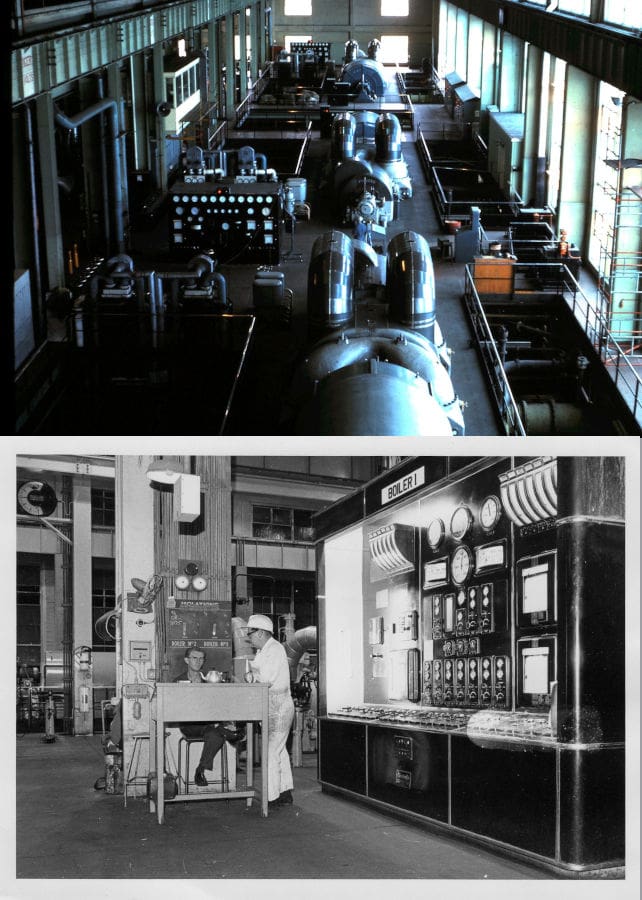
Three 30MW Parsons turbines at Playford Power Station near Port Augusta. image credit John Moss
These Days, It’s All Different
So people have an incentive to change their behaviour, use their own energy, and live efficiently. It’s actually well suited to large thermal batteries like hot water and ceramic heat banks, although for outright efficiency, we should be using heat pumps.
Off Peak Isn’t The Right Terminology
So when today’s network company is trying to maintain stability and wants to throttle down your solar, air conditioning, or EV charger, it’s worth remembering we have always ceded some control to the network.
Combined with demand response, where you’re paid to economise, and dynamic tariffs to incentivise storage, Megawatts of baseload just disappear in a puff of smoke the industry nerds call Negawatts.
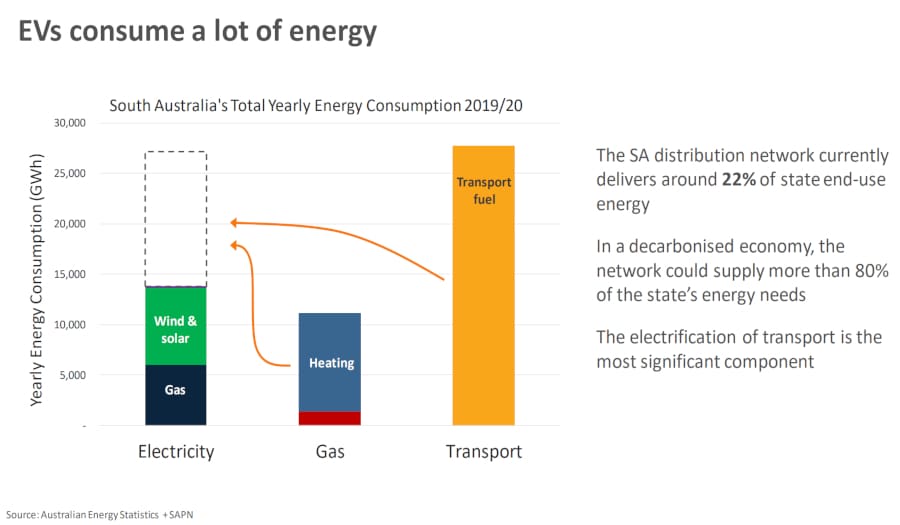
Energy delivered via electricity is set to double. If we get it right there’s not much extra infrastructure needed to distribute it, everyone just has to share.
If everyone demands they’re entitled to a midday feed-in tariff, or to run their air conditioner flat out, charge their EV & cook dinner all at once, then it’ll just get expensive and ultimately unsustainable to overbuild the network to suit.
EV Charging Either Way
I’ve been banging on about using type 1 charging for EVs before. It’s easy to control 2kW with a simple switched circuit. Write to your local member, we should have these available absolutely everywhere our cars are parked during the day.
Type 2 EV charging can also be variable. So solar smart charging is an excellent way to harvest solar yield at rates up to 7 or 22kW.
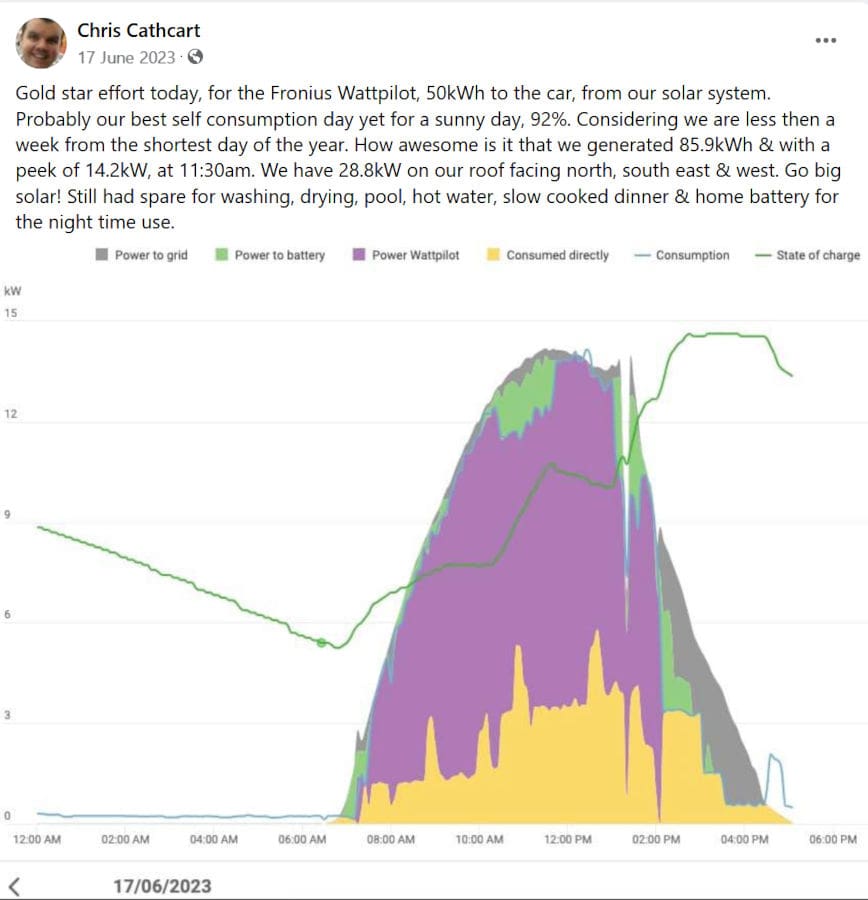
Chris loves to show Facebook it’s done, with the purple representing flexible car charging
Cheap Rates Are Anytime Rates
Many will find it better to install their own timer and take control of the load themselves rather than rely on the network company.
Using your own solar is the best way, but if your retail deal offers cheap TOU daytime rates, it won’t matter much if you import a little energy when the clouds pass over.
A simple timer is very effective for heat pump hot water. Still, for those with resistive hot water, especially on higher flat-rate plans, smarter solar management is much more beneficial.
For EV charging, smart diversion is essential because you’ll never reliably export 7kW for hours on end.
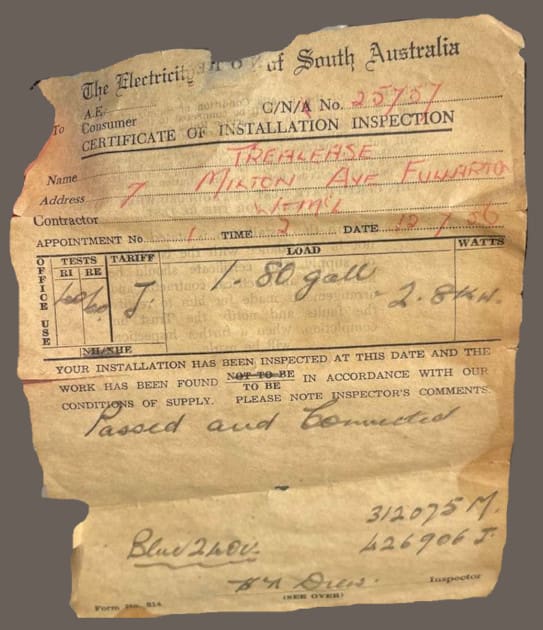
1 x 80 gallon hot water service with 2.8kW element, connected to “J” tariff. Inspected 10/7/56. image credit random vintage fridge advert on Gumtree
Technically, Controlled Load Shouldn’t Be Switched
Even though day/night switches have been available for hot water boosting since forever, network rules say you shouldn’t pick and choose between controlled load and anytime tariffs.
My understanding is the banana benders are the only ones silly enough to police this. Every other DNSP knows it’s in their interest to soak up the duck curve. Now, Queenslanders aren’t all backward, but the advice here may be different for them and their half-size hot water tanks.
Whether you prefer a heat pump or conventional hot water, a house battery, or a much bigger one with wheels to eliminate your petrol bill, the best advice I can offer is to get on with doing it. There’s no time like the present to save money with stored sunshine.
Original Source: https://www.solarquotes.com.au/blog/solar-for-controlled-loads/

